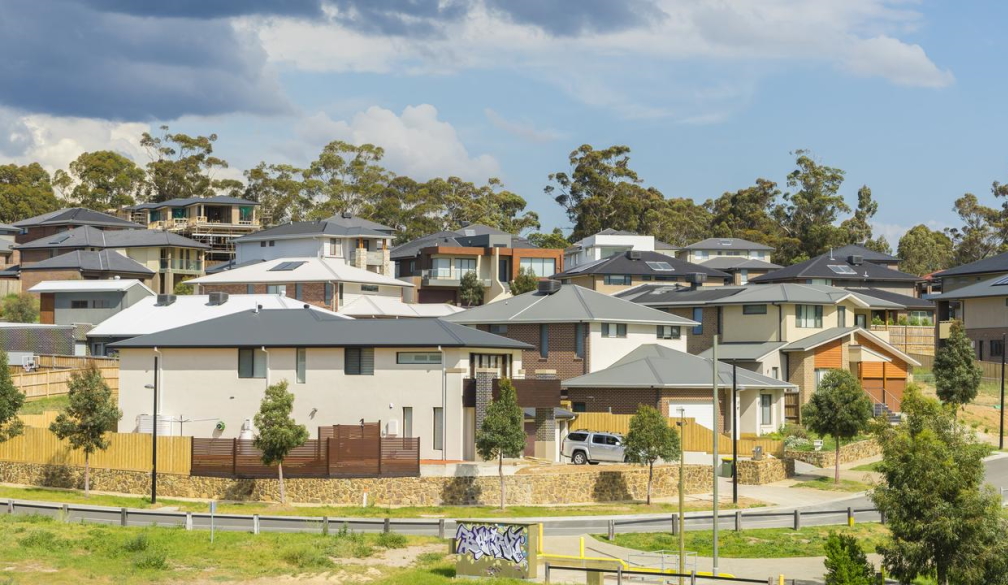The long game … 30 years of housing values
- Written by Corelogic

Through the peak of the latest growth cycle, approximately 617,300 homes were sold across Australia, the largest number of sales since 2003, but that equates to only 6.3% of Australian dwellings turning over in a year, highlighting that most home owners aren’t directly impacted by changing values.
Given the focus on the surge in housing values through the pandemic, and the more recent weakening in home value trends as interest rates rise, it’s worthwhile providing a refresher on how significantly housing values have changed over time, specifically the past three decades.
Over that 30-year period we have seen six distinct cycles of growth and an equal number of cycles of decline (including the current downswing) across the national index. Each of the upswings and downturns have been characterised by different environments and catalysts of change such as taxation policy, monetary policy decisions, economic shocks, fiscal stimulus and broader economic conditions.
While housing values move through cycles of growth as well as declines, the long-term trend is undeniably upwards. Nationally, dwelling values have increased 382% over the past 30 years, or in annual compounding terms, rising by 5.4% on average since July 1992.
Across each of the past three decades, at a macro level, it was the 1992-2002 period that provided the largest capital gains, with CoreLogic’s national Home Value Index (HVI) rising by 77%. The middle decade (2002-2012) saw the national HVI rise by 59%, while the most recent decade has seen national dwelling values increase by 72%.
However, between regions there have been substantial differences depending on local market dynamics. For example, the mining boom and subsequent bust in WA saw Perth housing values rise by 104% between 2002 and 2012, but today’s values are only 14% higher over the current decade (2012-2022). In Hobart, the 1992-2002 period was the weakest of the three decades analysed, with values up 30%, while the most recent 10 years has seen Hobart housing values surge 99% on the back of stronger migration and an ongoing undersupply of housing.
Overall, the long-term trends highlight the cyclical nature of housing markets. Changes in housing values over decades are a clear reminder that time in the market is more important than timing the market.
Dispelling a long held housing myth, it’s actually rare for housing values to double in 10 years. Over the past decade, none of the capitals and only one regional market (Regional Tasmania) recorded a growth rate of 100% or higher. In the previous 2002-2012 decade it was only Perth and Darwin where housing values doubled.
Most regions have seen house values rise substantially more than unit values over the past 30 years, which is likely a reflection of the scarcity value of land driving a faster rate of appreciation. Conversely, the unit sector tends to show higher yields relative to houses. Across the combined capital cities, house values are up 453% over the past 30 years, substantially higher relative to the unit sector where values are 307% higher.
The performance gap is less substantial across the combined regional markets, with house values up 314% since 1992 compared with a 213% rise in unit values. The smaller long-term rate of capital gain might be attributable to lower unit supply levels across regional Australia, along with higher demand for holiday style units or retirement options.
Capital cities have recorded a higher growth rate than the regional areas of Australia over the past 30 years, with dwelling values rising by 409% and 294% respectively across each of the combined capital city and rest of state regions.
The higher growth rate across the capital cities probably reflects a combination of higher demand and greater scarcity of supply compared with regional markets, along with more diversified economic conditions within the capital cities.
Highest 30-year growth rate
Capitals: Melbourne +459% (5.9% per annum)
Regionals: Regional Tasmania +361% (5.2% per annum)
Lowest 30-year growth rate
Capitals: Perth +303% (4.8% per annum)
Regionals: Regional WA +214% (3.9% per annum)
The long game… 30 years of housing values mini report is attached. It contains:
- Percentage change in dwelling values by decade
- Combined capitals house and unit values July 1992 to July 2022
- Combined regionals house and unit values July 1992 to July 2022
- Summary for each capital city
- Outlook for long term growth
- League tables for best performing SA3 regions over the past three decades


















